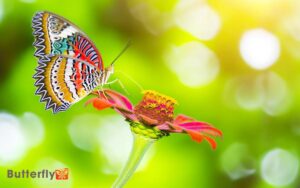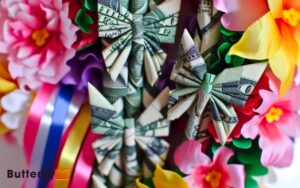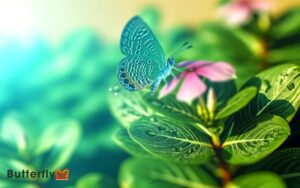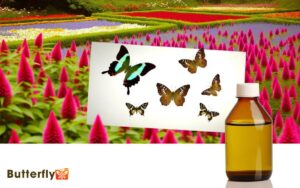What Colors Do Butterfly Bushes Come In to Transform Your Garden?
Butterfly bushes (Buddleja spp.) exhibit a broad color palette, including purple, blue, pink, white, yellow, and red varieties. Purple and blue hues, like those in Buddleja davidii, are common and widely appreciated for their vibrant appeal.
Pink varieties such as 'Pink Delight' are known for their vivid coloration, while white cultivars like Buddleja davidii var. albiflora offer strikingly pure blooms.
Yellow selections include hybrids like Buddleja x weyeriana, noted for their bright tones. Red cultivars present deep crimson shades.
Additionally, mixed-color varieties provide unique, multi-hued floral displays. For a thorough understanding of these varieties, further details on each can be explored.

Key Takeaways
- Butterfly bushes come in a variety of colors, including purple, blue, pink, white, yellow, and red.
- Purple butterfly bushes, such as Buddleja davidii, are known for their vibrant violet inflorescences.
- Blue butterfly bushes feature hues ranging from pale sky blue to deep indigo, with notable varieties like 'Blue Chip' and 'Lochinch.'
- Pink butterfly bushes, including cultivars like 'Pink Delight' and 'Miss Molly,' offer vibrant pink blooms.
Purple Butterfly Bushes
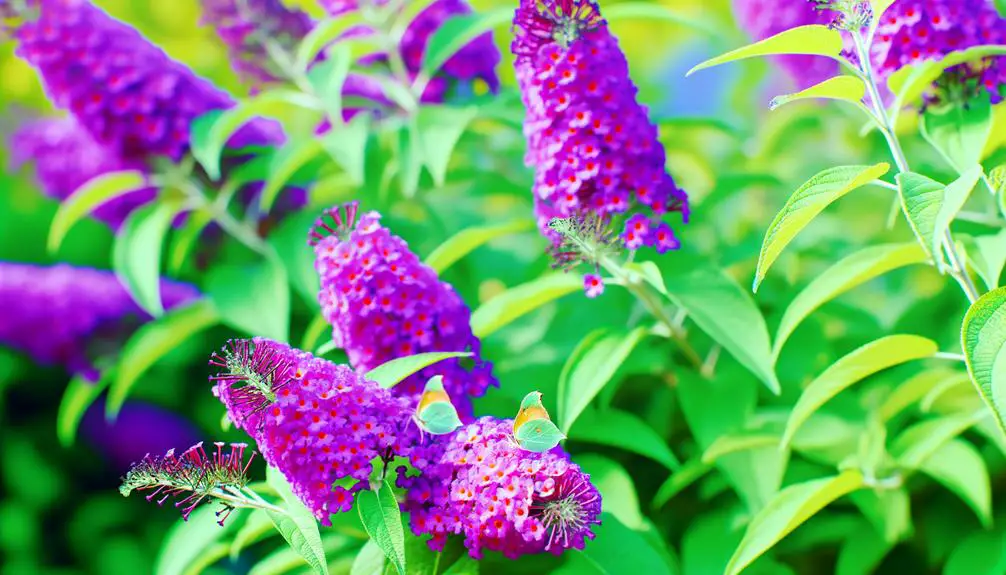
Purple Butterfly Bushes, scientifically known as Buddleja davidii, are renowned for their vibrant violet-hued inflorescences that attract a plethora of pollinators, particularly butterflies and bees.
These deciduous shrubs, native to China and Japan, can reach heights of up to 5 meters in ideal conditions. The purple flowers, arranged in dense panicles, typically bloom from summer to early autumn, providing an extended period of nectar availability.
Their lance-shaped leaves, which are often gray-green, complement the vivid blossoms. The plant's ability to thrive in a wide range of soil types and its tolerance to drought make it a favored choice for gardeners.
In addition, Buddleja davidii's resilience to urban pollutants underscores its suitability for urban and suburban landscapes.
Blue Butterfly Bushes
Blue butterfly bushes (Buddleja davidii) exhibit a remarkable spectrum of blue hues, ranging from pale sky blue to deep indigo.
These variations are not only visually enchanting but also influence the plant's adaptability and care requirements.
Understanding the specific needs for ideal growth, such as soil composition, sunlight exposure, and watering schedules, is essential for maintaining the health and vibrancy of these stunning plants.
Varieties of Blue Shades
Among the various hues of butterfly bushes, those displaying blue shades exhibit a remarkable spectrum that ranges from pale sky blue to deep indigo. Each cultivar contributes unique visual appeal and ecological benefits to gardens and landscapes.
Notable varieties include Buddleja davidii 'Blue Chip', which offers compact growth and vibrant blue blossoms, and Buddleja 'Lochinch', renowned for its silvery foliage and lavender-blue flowers.
The cultivar 'Adonis Blue' is prized for its strikingly intense blue clusters that attract a myriad of pollinators.
These blue butterfly bushes not only enhance aesthetic diversity but also support local ecosystems by providing nectar for bees, butterflies, and other beneficial insects. This makes them invaluable in promoting biodiversity within urban and rural settings alike.
Growth and Care Tips
Ensuring the ideal growth and health of blue butterfly bushes necessitates careful attention to factors such as soil composition, sunlight exposure, and watering practices.
These shrubs thrive in well-drained, slightly alkaline soil rich in organic matter. Full sunlight is essential, as it promotes optimal flowering and robust growth.
Watering should be consistent but moderate; overwatering can lead to root rot, while insufficient irrigation may hinder blooming.
Pruning is also important, ideally performed in late winter or early spring, to remove dead or weak branches and encourage vigorous new growth.
Additionally, applying a balanced, slow-release fertilizer in the growing season supports nutrient uptake, enhancing overall health and bloom production.
Proper mulching helps retain soil moisture and control weeds.
Pink Butterfly Bushes
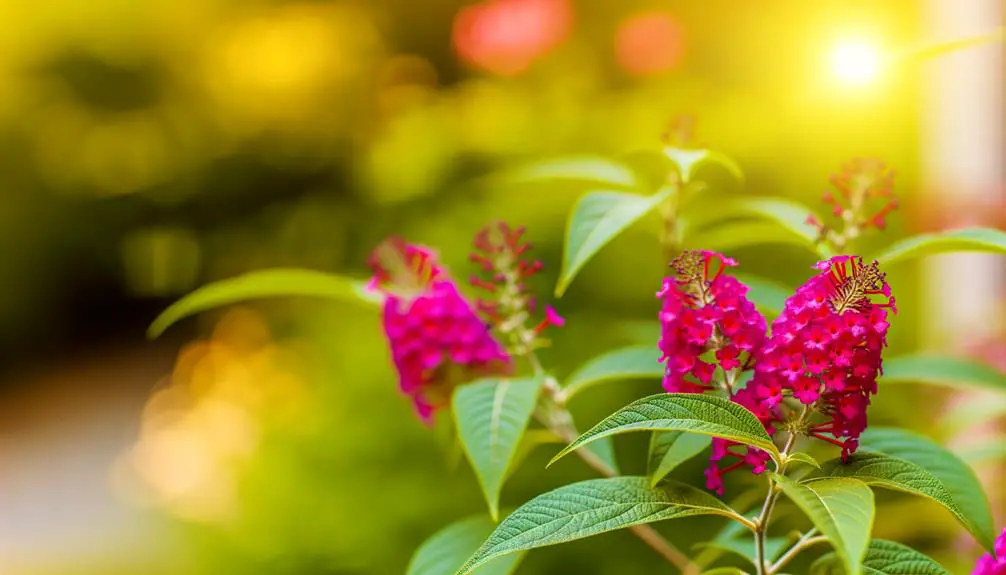
Pink Butterfly Bushes, known scientifically as Buddleja davidii, exhibit vibrant pink blooms that not only enhance garden aesthetics but also attract a variety of pollinators, including butterflies and bees.
These deciduous shrubs are hardy and can thrive in USDA zones 5 through 9, requiring full sun and well-drained soil for ideal growth.
The inflorescences, typically measuring 6 to 12 inches, consist of numerous small flowers that emit a sweet fragrance, contributing to their appeal.
Additionally, their blooming period extends from mid-summer to fall, providing prolonged visual interest.
Cultivars such as 'Pink Delight' and 'Miss Molly' are particularly noted for their vivid pink hues and resilience, making them popular choices among gardeners seeking both beauty and ecological benefits.
White Butterfly Bushes
White Butterfly Bushes, scientifically known as Buddleja davidii var. albiflora, are distinguished by their striking white flower spikes and their ability to attract a diverse range of pollinators.
These deciduous shrubs are notable for their elongated panicles, which can reach lengths of up to 12 inches. The flowers, composed of numerous tiny, tubular blossoms, emit a sweet fragrance that is particularly appealing to butterflies, bees, and hummingbirds.
In addition to their aesthetic appeal, white butterfly bushes are relatively hardy and can thrive in USDA zones 5 through 9. They prefer full sun and well-drained soil, and once established, they exhibit a moderate tolerance to drought.
Regular pruning encourages vigorous growth and abundant flowering.
Yellow Butterfly Bushes
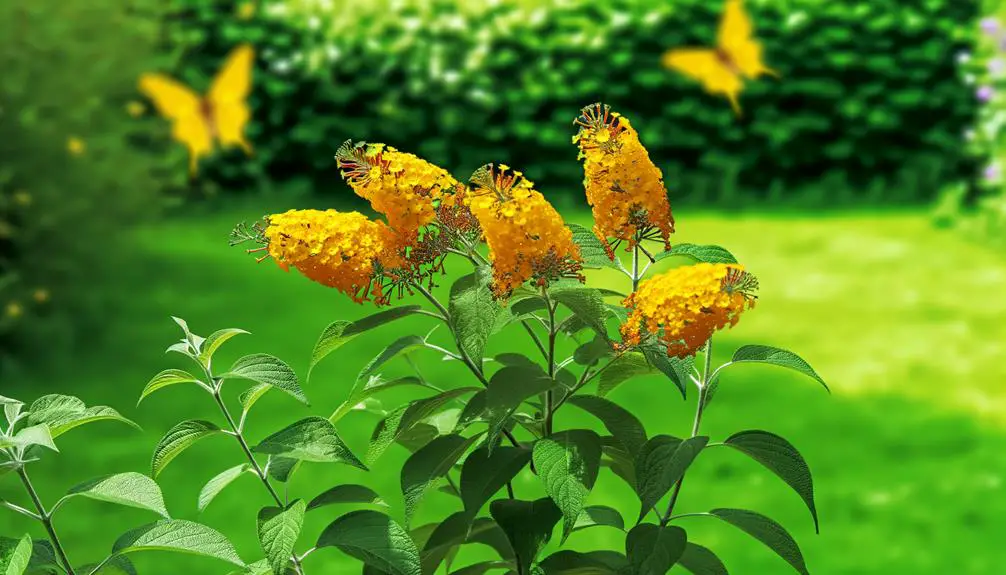
Yellow butterfly bushes, botanically referred to as Buddleja davidii, include a variety of cultivars and hybrids that exhibit vibrant yellow inflorescences. These striking flowers attract numerous pollinators, including butterflies, bees, and hummingbirds, making them a valuable addition to any garden. Gardeners often seek different yellow butterfly names when selecting specific cultivars, such as ‘Honeycomb’ or ‘Sungold,’ known for their abundant blooms. Proper care, including full sunlight and well-drained soil, ensures these plants thrive and produce their signature golden blossoms.
These plants require specific growth conditions, such as well-drained soil and full sun exposure, to thrive and maintain their health.
Popular yellow shades range from pale lemon to deep gold, each contributing unique aesthetic and ecological benefits to garden landscapes.
Varieties and Hybrids
Among the diverse varieties of butterfly bushes, the yellow hybrids, known scientifically as Buddleja x weyeriana, stand out for their unique chromatic traits and horticultural significance. These hybrids, resulting from the crossbreeding of Buddleja davidii and Buddleja globosa, exhibit vibrant yellow to orange hues and cater to a spectrum of garden aesthetics.
| Varietal Name | Distinctive Feature |
|---|---|
| 'Honeycomb' | Deep yellow flowers, compact growth |
| 'Sungold' | Golden yellow blooms, vigorous habit |
| 'Moonlight' | Pale yellow, delicate fragrance |
| 'Golden Glow' | Bright yellow, attracts pollinators |
These varieties not only enhance visual appeal but also support ecological balance by attracting butterflies and other pollinators, making them a valued addition to ornamental horticulture.
Growth and Care
Understanding the growth and care requirements of yellow butterfly bushes is paramount for gardeners seeking to maximize their ornamental and ecological benefits.
Yellow butterfly bushes (Buddleja davidii) thrive in well-draining soil with a neutral to slightly alkaline pH. Full sun exposure is critical, as it guarantees ideal flowering and robust growth.
Regular watering is essential, particularly during the establishment phase, though mature plants exhibit some drought tolerance. Pruning in early spring stimulates new growth and enhances flowering.
Fertilization with a balanced, slow-release fertilizer in the spring supports vigorous development. Additionally, monitoring for pests such as spider mites and aphids is recommended.
Implementing these care practices guarantees the yellow butterfly bush's longevity and its role in attracting pollinators.
Popular Yellow Shades
While the yellow butterfly bush boasts various shades, its most popular cultivars include 'Honeycomb,' 'Sungold,' and 'Lemon Glow,' each distinguished by their unique hues and flowering patterns.
'Honeycomb' features dense clusters of pale yellow blooms, creating a striking contrast against its dark green foliage.
The 'Sungold' cultivar produces vibrant, golden yellow flowers with a slightly more open form, attracting a variety of pollinators.
'Lemon Glow' is renowned for its soft, lemon-yellow blossoms that exude a delicate fragrance, enhancing garden aesthetics.
These cultivars not only contribute to biodiversity by supporting pollinators but also add a spectrum of yellow tones to garden landscapes, making them a preferred choice for horticulturists and garden enthusiasts alike.
Red Butterfly Bushes
Red butterfly bushes (Buddleja davidii) are a striking and popular variety known for their vibrant, crimson-hued flower clusters that attract a multitude of pollinators, particularly butterflies and hummingbirds.
These deciduous shrubs, typically blooming from mid-summer to early autumn, thrive in well-drained soil and full sun, reaching heights of 6 to 12 feet. Their elongated, lanceolate leaves provide a lush backdrop to the vivid blossoms, enhancing their visual appeal.
The inflorescences of red butterfly bushes are not only aesthetically pleasing but also play an essential ecological role by supporting local pollinator populations.
Regular pruning encourages denser growth and more prolific flowering, making them an excellent choice for gardeners seeking both beauty and ecological benefit.
Mixed-Color Varieties
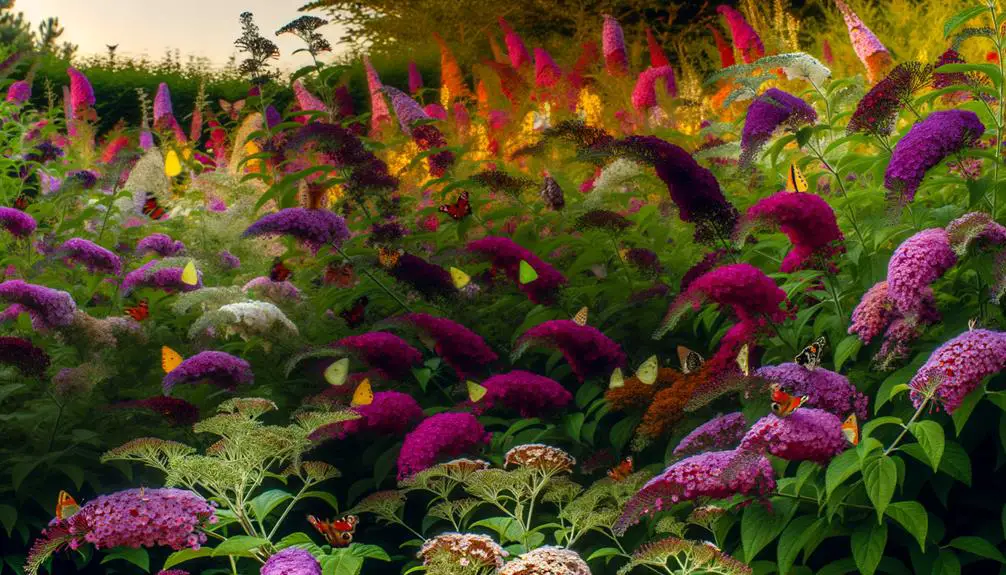
Among the diverse array of butterfly bushes, mixed-color varieties stand out for their unique ability to produce blossoms in a spectrum of hues on a single plant, offering a dynamic and visually stunning addition to any garden.
These cultivars, such as Buddleia 'Bicolor,' exhibit multiple shades within their inflorescences, ranging from deep purples to vibrant pinks and soft lavenders, often shifting seamlessly between colors.
This phenomenon results from genetic variations and selective breeding aimed at enhancing ornamental appeal.
Mixed-color butterfly bushes not only attract a wider array of pollinators, such as butterflies and bees, but also provide prolonged blooming periods.
Their adaptability to various soil types and resistance to common pests further underscore their horticultural value.
Conclusion
To sum up, butterfly bushes exhibit a diverse palette of colors, including purple, blue, pink, white, yellow, and red. Each color variant contributes uniquely to garden aesthetics and ecological benefits, such as attracting pollinators.
The availability of mixed-color varieties further enhances the appeal and versatility of these plants.
The thorough understanding of butterfly bush color variations underscores their horticultural significance and ecological value, making them a favored choice for both ornamental and environmental purposes.

